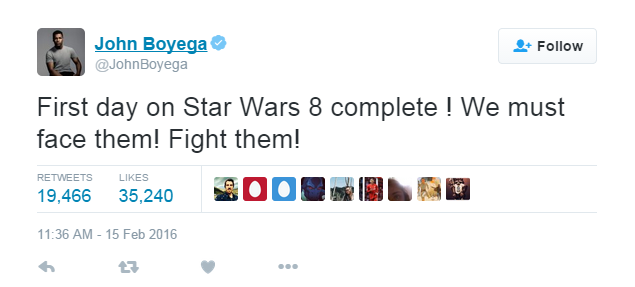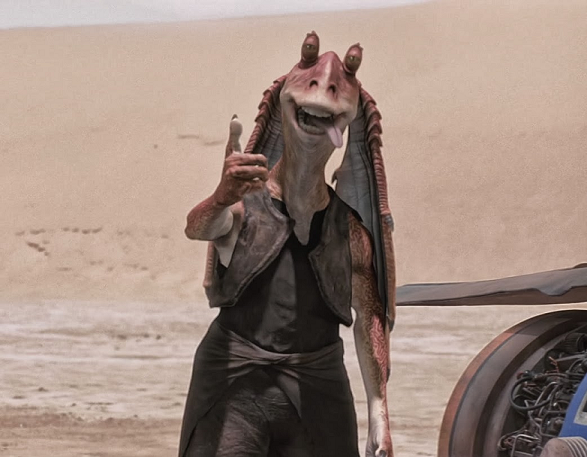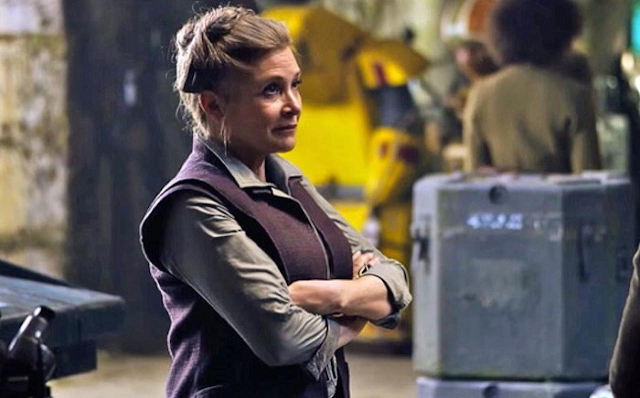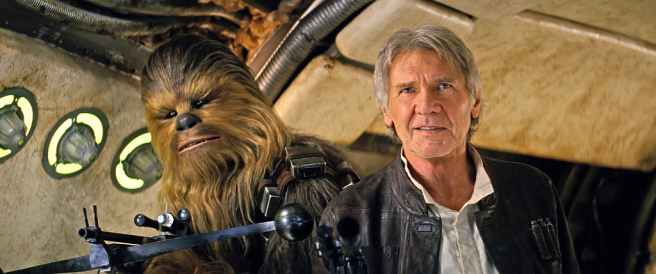
On May 13, 2005, the cancelled Star Trek: Enterprise aired its much-maligned series finale, “These Are The Voyages,” and for the first time in eighteen years there would be no new Star Trek on the air in the fall. Likewise, the box office failure of Star Trek Nemesis had staked the film series through the heart. Even die-hard fans, weary of repetitive plots resolved by reconfiguring the deflector dish, were pleading that Trek needed a forced rest. Go away, we cried, echoing Bono, and dream it all up again. Behind the scenes, life still stirred, as franchise guardian Rick Berman proposed reinvigorating the movies by introducing a brand new crew in a yet-unexplored piece of Trek‘s future history: the Earth/Romulan war of the 22nd Century. He hired Band of Brothers writer Erik Jendresen to pen a script with a World War II movie feel called Star Trek: The Beginning. In Jendresen’s draft, after a devastating attack on Earth by a Romulan fleet, the disgraced Captain Tiberius Chase, an ancestor of James Tiberius Kirk, would lead his hastily assembled, ragtag crew on what would turn out to be a suicide mission to detonate a nuclear bomb in the heart of the Romulan Empire and bring an end to the war. Fans weren’t wild about Berman’s continued stewardship, and this proposed story sounded pretty depressing after the already dreary Nemesis. And so it was that in 2006, new Paramount chief Gail Berman (no relation) cancelled development on The Beginning and turned creative control of future Star Trek film projects over to an up-and-coming filmmaker named J.J. Abrams.
Abrams had started young, writing the script for the Harrison Ford movie Regarding Henry at the age of 21 and serving as script doctor on blockbusters like Armageddon before turning to television and achieving success with the series Felicity and Alias. The latter, starring Jennifer Garner as a spy who has to keep her espionage work secret from her closest friends, attracted the notice of Tom Cruise and earned Abrams a shot at directing the third Mission: Impossible movie, which made $400 million worldwide just as Rick Berman was being advised that his services were no longer required. M:I-III just happened to be a production of Paramount Pictures, who had signed Abrams to a multi-film contract and realized, well, lookie here, we have this other moribund franchise in need of some adrenaline. Abrams, who admitted up front he had always been more of a Star Wars fan, signed his Bad Robot Productions on to produce, but wouldn’t commit to direct as well unless the script measured up. To ensure that it did, he brought along his co-writers from M:I-III who were also veterans of Alias: Roberto Orci, who described himself as a rabid Trekkie, and Alex Kurtzman, who didn’t. Immediately they faced the challenge of what to do with Star Trek‘s weighty history: ten movies, hundreds of episodes and one of the most elaborate – and from some perspectives, creatively suffocating – fictional canons ever assembled.
Their answer: toss it.
Sort of.

Abrams wasn’t interested in chronicling the further exploits of Captains Picard, Sisko, Janeway et al, claiming that the various spinoffs and sequels had “disconnected” him from the franchise. He wanted to return to the essence of Star Trek, and that meant a new take on the classic characters of Kirk and Spock, and, in an echo of the Harve Bennett “Starfleet Academy” movie that had never been made, going back to look at how they first met to reintroduce them to a new world. He noted, however, that one of the (many) weaknesses of the Star Wars prequels was that there was little dramatic tension in their foregone outcome – basically, you knew Obi-Wan Kenobi wasn’t going to die because you’d already seen him in his elder years. Abrams, Kurtzman and Orci came up with a concept that in their minds would respect the hundreds of hours of Trek that had gone before but still give them carte blanche to craft a fresh and unpredictable story – without throwing away everything a la Batman Begins. To wit: using a little time travel to go back before Kirk was even born and create a new, unpredictable alternate universe in which all bets as to the fates of our characters were off. Satisfied with the progress of scripting, Abrams agreed to direct and his participation was confirmed by official press release in February of 2007.
It was then a matter of finding new faces for this new universe.
Casting Captain Kirk’s original crew for the first time since 1966 was a daunting task; the fanbase would rebel, and quite rightly so, if the iconic roles were filled with a bunch of vapid CW flavor-of-the-month types. Although Academy Award winner Adrien Brody (The Pianist) was interested in playing Spock, and Matt Damon had to call Abrams personally and ask him what was up after reading trade rumors that he would be cast as Kirk, the choice was made to go with actors who had solid experience but remained relative unknowns so they wouldn’t overwhelm the parts with offscreen personality. Zachary Quinto, who was earning notices as superpowered supervillain Sylar on the TV series Heroes, and looked more like a young Leonard Nimoy than Leonard Nimoy, was the first to be announced in July 2007 – along with Nimoy himself. The Bad Robot team had visited the retired actor at his home and pitched him their story and the significance of the presence of the elder Spock in it, and, uncharacteristically perhaps for a Vulcan, Nimoy was so moved by their presentation he could not speak for quite a few moments after they had left. With Nimoy having rejected multiple previous offers to rejoin the cinematic Trek universe, his enthusiastic participation calmed the nerves of fans who didn’t know what to make of these new kids who’d been trusted with the sacred keys to the Enterprise. After Nimoy and Quinto came the rest: Zoe Saldana, who had played a Star Trek fan in the Steven Spielberg movie The Terminal – where the legendary director taught her the split-fingered Vulcan salute – was cast as Uhura. Anton Yelchin, who had been born in Leningrad, got the role of Chekov, while John Cho, best known for his comedic roles, took over as Sulu. After working with him on Mission: Impossible, Abrams cast Simon Pegg as Scotty simply by sending him an e-mail asking him if he wanted the part (would that we could all get jobs so easily.) And Lord of the Rings veteran Karl Urban was first rumored to be playing the villain before it was clarified that he’d be succeeding DeForest Kelley as McCoy.

The guest cast began to fill in with interesting names as well: Ben Cross, as Spock’s father Sarek, became the second actor from Chariots of Fire (after Alice Krige) to take on a Star Trek role. Jennifer Morrison from TV’s House and Once Upon a Time signed on to play Kirk’s mother Winona, her presence in the movie confirmed after paparazzi snapped a picture of her walking to the set in a bathrobe to conceal her costume. A more famous Winona – Winona Ryder – would play the cameo part of Spock’s mother Amanda. Bruce Greenwood got the role of Captain Christopher Pike on the strength of his work as John F. Kennedy in Thirteen Days. After trying his hand at being a superhero in 2003’s controversial Hulk, Eric Bana decided to err on the side of villainy as the embittered Romulan captain Nero. Some other Australian guy no one had really heard of at the time named Chris Hemsworth was cast as Kirk’s father George. The crew needed its captain, though, and while Mike Vogel, who had worked for Abrams before on the 2008 shaky-cam horror movie Cloverfield, was said to be a front-runner, the successor to William Shatner was ultimately announced as Chris Pine. Pine’s father Robert was a veteran TV character actor who had guest-starred on Enterprise as a Vulcan, and Chris’ most prominent role to date had been alongside Lindsay Lohan in a 2006 rom-com called Just My Luck. Pine looked not to create an impression of Shatner but rather to Harrison Ford’s roles as “accidental heroes” Indiana Jones and Han Solo as inspiration in his interpretation of Jim Kirk.
Shooting began in November of 2007, just as the Writers’ Guild of America went on strike. As a result, for fourteen weeks of production, Abrams could not make any changes to the screenplay (very, very few scripts are “locked in” once shooting begins – on-the-fly rewrites and polishes may be required as stuff that seems brilliant on the page often doesn’t work when the cameras finally roll and the actors have to say the lines). But the overall impact on the production was minimal, and because writers Kurtzman and Orci were also credited executive producers, they could be on set the entire time and provide indirect assistance in shaping scenes without violating their union rules. Of course none of that would have mattered to those of us who were awaiting this new take on Trek with equal measures of excitement and apprehension; thrills at the spare-no-expense blockbuster treatment balanced with fear that the entire affair would be a trendy Hollywood dumbing down of what was still thought of as the more cerebral of the world’s two leading cinematic space franchises. The first teaser trailer, which showed the Enterprise under construction to echoes of the sounds of the early American space program, did much to heighten our enthusiasm that perhaps this would finally, after a string of false starts, be the Star Trek movie we were waiting for.
May 2009 arrived, the theater lights dimmed, and we held our breath…

In a prologue set in the year 2233, the starship U.S.S. Kelvin encounters an enormous, spider-like vessel, the Narada, emerging from a lightning storm in space. Quickly crippling the outmatched starship with their advanced weapons, the Romulan crew demand that the Kelvin‘s Captain Robau come aboard to discuss surrender, leaving first officer George Kirk (Hemsworth) in command. The Romulans want to know the location of a strange jellyfish-shaped ship and its pilot, an Ambassador Spock. When Robau admits he does not know of either, the Romulans’ leader Nero (Bana) kills him in a fit of rage and resumes the attack on the Kelvin. Kirk orders the entire crew to the shuttles and escape pods, including his wife Winona (Morrison) who has just gone into labor. With weapons gone, Kirk sets the Kelvin on a collision course, but the autopilot is disabled and he must remain behind. He hears the first cries of his baby son, and he and Winona agree to name the boy Jim. The Kelvin cripples the Narada and allows the shuttles to escape, but George Kirk is killed, leaving the newborn Jim fatherless.
A decade later, we peek in on our two lead heroes: teenage Jim Kirk is leading a rebellious life in Iowa, while on the planet Vulcan, young Spock is bullied over his half-human heritage. A college-aged Spock (Quinto) is eventually accepted to the Vulcan Science Academy, but rejects the honor after the Vulcan elders refer to his human half as a disadvantage. In Iowa, a group of Starfleet cadets are celebrating before shipping out to the Academy, and townie Kirk (Pine) makes a drunken attempt to flirt with Uhura (Saldana) before getting his ass kicked in a fight that is stopped by Captain Christopher Pike (Greenwood). Pike talks about Kirk’s father and how he represented an element of daring that Pike feels Starfleet has lost. He notes that in George Kirk’s twelve-minute captaincy, he saved 800 lives. Pike dares Jim to do better and suggests that he enlist in Starfleet. After a late night bike ride to contemplate the U.S.S. Enterprise being built in a cornfield, Jim accepts Pike’s challenge and boasts that he will complete the four-year Academy program in three years. On the shuttle ride to San Francisco, Kirk meets up with the man who will become his dear friend, Doctor Leonard McCoy, who laments that his recent divorce has left him with nothing but his bones.

Three years later, Nero’s crew, which has been waiting out in space for a quarter century, captures the mysterious jellyfish ship when it emerges from a second lightning storm, with Nero growling “welcome back, Spock.” At the Academy, Kirk is taking the no-win Kobayashi Maru simulation test (first mentioned in The Wrath of Khan) after failing it twice, this time beating it by reprogramming the simulation. A disciplinary hearing is convened and Kirk is dressed down by the test’s programmer, Spock. But judgment is interrupted when a distress call comes in from the planet Vulcan, which says it’s under attack. All cadets are assigned immediately to different ships, with the exception of Kirk, who is grounded pending a decision on his status. McCoy injects Kirk with a vaccine to make him ill and invokes a regulation regarding transportation of patients to bring him onboard the ship to which he has been assigned – the brand new U.S.S. Enterprise. A Starfleet armada warps out of orbit headed for Vulcan, with the Enterprise delayed a few moments as its helmsman Sulu (Cho) forgets to disengage the inertial dampeners. But when a woozy Kirk overhears Chekov (Yelchin) talking about the appearance of a lightning storm in space preceding the attack on Vulcan, he makes the connection with the lightning storm that occurred on the day of his birth prior to the arrival of the Romulan ship, and realizes the Enterprise is heading into a trap.

The Enterprise drops out of warp into a scene of carnage: the entire fleet of starships destroyed by the Narada’s advanced weapons, and its laser drill carving a deep bore into the surface of Vulcan. Nero orders his crew to destroy the new arrival too until he realizes what ship it is. He hails the Enterprise and addresses Spock, advising him that they will know each other quite well in the future. Nero also demands that Pike surrender himself by shuttle. Pike agrees, leaves Spock as acting captain and promotes Kirk to first officer. He assigns Kirk, Sulu and Chief Engineer Olson to space-jump to the drill platform to try to disable it. The thrill-seeking Olson (dressed appropriately in red) waits too long to deploy his chute and is killed, and the explosive charges he was carrying are lost. Kirk and Sulu still manage to overpower the Romulans on the platform and disable the drill, but not before Nero’s crew launches a probe filled with mysterious “red matter” into the drilling site. The probe detonates inside Vulcan’s core and a singularity begins to form – a black hole that will consume the planet. Spock beams down to locate his parents, but his mother is lost as the group beams aboard, and Vulcan is destroyed.

Left in command of the Enterprise with the death of his mother and his planet weighing on his mind, Spock decides to retreat to join the rest of Starfleet in the Laurentian system. Kirk objects, insisting that they should be hunting Nero down. Frustrated, Spock renders the combative Kirk unconscious and dumps him on the icy world of Delta-Vega. There, Kirk is saved from a ravenous local monster by an oddly familiar old Vulcan: the original Spock (Nimoy). Spock Prime explains everything: one hundred and twenty-nine years from now, a star will go hypernova and threaten to destroy the galaxy. Spock was sent to use red matter to swallow the nova with a black hole, but he was not able to act in time before the planet of Romulus was destroyed by the cosmic explosion. Nero held him responsible and chased him down, but both ships fell into the black hole and were transported back in time, with Nero arriving first, and changing history by destroying the Kelvin. Nero now has Spock’s ship and the red matter and intends to destroy every remaining planet in the Federation in retaliation for the loss of Romulus. Spock Prime knows he has to get Kirk back to the Enterprise and takes him to someone who can help: Montgomery “Scotty” Scott (Pegg), who has been assigned to a derelict Starfleet observation post on Delta-Vega. Spock completes Scotty’s formula for transwarp beaming and transports Kirk and the engineer back to the Enterprise, where Kirk forces the younger Spock to relinquish command to him after provoking him into a wild display of anger. Kirk orders the Enterprise to chase after Nero, who is on his way to Earth after obtaining the system’s planetary defense information from a tortured Pike.
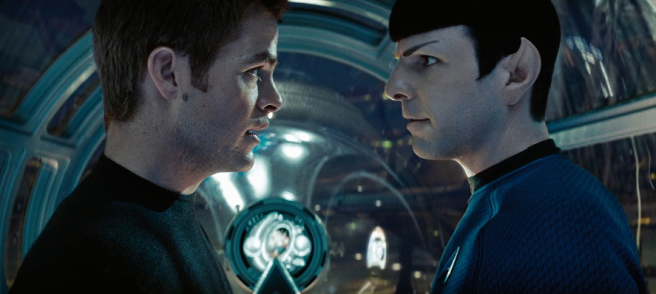
After a conversation with his father in which he realizes that his emotions can be a source of strength, Spock returns to duty and makes amends with Kirk. The Narada arrives at Earth and begins drilling into San Francisco Bay, while the Enterprise conceals itself in Saturn’s rings and Kirk and Spock beam to Nero’s ship, where Spock obtains the details of Nero’s scheme and the location of Captain Pike from a mind-meld with an unconscious Romulan. They locate the jellyfish ship and its supply of red matter, and the ship recognizes Spock as its pilot and permits him to steal it. Kirk confronts Nero, who brags that he will deprive the young captain of his future just as he did Kirk’s father. But their fight is interrupted as Spock uses the jellyfish ship to destroy the drill, and Nero orders his crew to pursue it. Kirk defeats Nero’s second-in-command and heads off to rescue Pike. Spock sets the jellyfish ship on a collision course with the Narada, and Nero fires everything he has – only to be surprised by the Enterprise, which destroys Nero’s missiles and allows the jellyfish ship to complete its kamikaze run, with Kirk, Spock and Pike beamed to safety. The red matter ignites on impact and a black hole begins to form inside the Narada. Nero refuses assistance and quietly closes his eyes as his ship is crushed. The black hole begins to pull in the Enterprise as well, but Scotty ejects and detonates the warp core to push the starship clear.
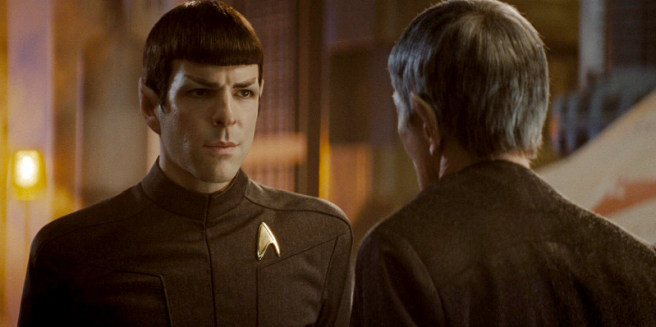
At a ceremony on Earth, Kirk’s field promotion to captain is made permanent and he is assigned the Enterprise in relief of Pike, who assures him that his father would have been proud. Spock encounters his future self, and Spock Prime promises him that his friendship with Kirk will come to define them both. The Enterprise crew is reunited and sent off on its first formal mission, and the elder Spock narrates the famous “space, the final frontier” speech as the grand ship hurtles into warp, and sequels.
Well then.
Star Trek was always popular, but not that popular, really – it had consistently been a moderate box office performer, a sort of useful pinch-hitter who comes off the bench every few innings for a single up the middle right when it’s needed, but never sets any records or makes the playoff roster. There had been attempts to lure non-fans, but both production and marketing for each film release tended to linger on the conservative side of the ledger, operating from the perspective that “we know we’ll get the Trekkies, and if we get a few other folks wandering in too, hey, that’s gravy.” Never had there been a concerted effort to really strive for that glittering true blockbuster ring hovering like a tantalizing tempter just out of reach, the gilded echelon achievable only by those who dare to leap for it with both feet. It was a credit to Paramount’s confidence in J.J. Abrams that they gave him and his team the resources with which to try. While previous entries relied on story and performances to create a sense of scale, the truth of the matter was that most of the time you still felt you were watching a TV production shot on cardboard sets, and what should have been a massive universe still seemed very small and confined. The Wrath of Khan got away with this because the people and the stakes were larger-than-life; The Search for Spock could have stood comfortably alongside a two-part episode of MacGyver. The Voyage Home created scale by being able to shoot in real locations without having to hide the cars driving by, but The Final Frontier whiffed with alien environments resembling nothing more exotic than anything you’d find ten miles from the Los Angeles studio gates. Progressively bigger budgets and more exotic location shooting followed, but the final results remained artificial and hopelessly Earthbound. It was, perhaps, a failure of ambition.

The worldbuilding of Star Trek has never felt immersive until the release of this movie, which finally had the resources and the determination to pay that critical exacting attention to every blessed detail; to make us feel as though you could wander through any door and find evidence of the 23rd Century in every conceivable nook and cranny. If Abrams borrowed this approach from Star Wars, so be it – but it works, and works well. And what we wanted from Star Trek in 2009 was not more of the same. So here are the thousands of extras that William Shatner couldn’t get for The Final Frontier. Here is the “future with a past” – fleets of ships both large and small that look banged up by years of re-use and not as though the paint dried five seconds before the cameras rolled. Here is a movie-caliber Enterprise that looks like the grand old lady we always imagined she was, with dozens of massive decks to get lost on. Here is an alien threat that doesn’t come off like one guy in a tiny room pushing plastic buttons. Here are exotic worlds with unifying cultural themes evident throughout their architecture, their costuming and even the lay of their landscapes; aesthetic details that you don’t notice on your first viewing but are saturated in each frame, pushing the experience into your mind on a subliminal level. And here, finally is the broad and extensive marketing campaign that sells a Star Trek movie as a can’t-miss event. Not a mere curiosity offered meekly for a small, enlightened clique, but the explosion of a globally inclusive phenomenon that makes you feel foolish for even considering giving it a pass. Maybe some Trek purists preferred the idea of a protective, hipster attitude towards it – this thing that is ours and that you mainstream people don’t get – but the economics of entertainment don’t always favor that attitude, and Star Trek was stagnating toward the brink of demise. It needed the kind of movie that would explode and introduce it to a new audience, and it simply couldn’t do that by staring at its own navel through a haze of impenetrable continuity. “Not your grandfather’s Star Trek,” proclaimed the ads, to the derision of more than a few.

One thing you can certainly never accuse J.J. Abrams’ films of is lacking in energy. In Star Trek the characters are alive and bursting from the screen in a way they never have been before; perhaps it is their immediate juxtaposition against the more languid Next Generation characters who had preceded them in the drab Nemesis, that makes them seem so vivid and colorful. As he would later show in The Force Awakens, Abrams always has an excellent eye for casting, and Pine, Quinto, Urban, Pegg, Cho, Yelchin and Saldana slip very comfortably into the roles originated by Shatner, Nimoy, Kelley, Doohan, Takei, Koenig and Nichols and are not burdened by the responsibility. They never make you forget about the original seven, but, armed with snappy, punchy (and mercifully bereft of technobabble) dialogue, they each bring something new to create complete characters for this new timeline instead of merely doing glorified impressions (Quinto and Urban veer closest to this dodgy tactic in their respective approaches but never quite tip over the line). Pine in particular is absolutely nothing like William Shatner, and the story’s decision to reinterpret James T. Kirk as a maverick, Beastie Boys-loving bad boy who stumbles into his captaincy by sheer, inherent “chosen one” awesomeness, instead of the dedicated, by-the-book career officer he had been in the original series – in effect playing Kirk as the exaggerated Zapp Brannigan version of himself – is perhaps the most jarring element of this reinterpretation, but to paraphrase The Dark Knight, this Kirk may be the hero we need, not the one we deserve.
That latter statement may be the best pronouncement to be made on the entire movie. Criticism at the time, of which there was relatively little, opined that this was an action movie, or a Star Wars remake, masquerading as a Star Trek film – that social commentary had been eschewed in favor of gags and broad action sequences. It was ironic that 1979’s Star Trek: The Motion Picture was lambasted at the time for having “none of the whiz-bang excitement of Star Wars,” and 30 years later the reboot was slammed for being too much like it. Whose verdict matters most? The moviegoing public, who decided to the tune of a record-obliterating $257 million in ticket sales that this was the movie they needed: exciting, optimistic, and fun instead of measured, ponderous and dry. Star Trek starts to buckle if you apply too much analytical pressure to its weaker points; the science is slapdash, the plot relies on too many encounters of convenience, and the screenwriters don’t seem to understand the process of advancement in military ranks, among many others, but there comes a point where you just say screw it, this is a flat-out great time at the movies and none of that stuff matters. It is not cerebral, but it does have a genuine heart, and more emotion in its scenes than the last five Star Trek movies combined. Perhaps it’s to the credit of Star Trek as a franchise that there are so many options on its menu to suit every taste and mood: some days you want to watch Stewart-as-Picard pitted in heated debate with a recalcitrant admiral and other days you prefer to watch Pine-as-Kirk bounce around in bed with sexy green girls. The big tent of Star Trek spans the galaxy, and this was the first time it got the proper big-screen treatment it had perhaps not needed, but always deserved.
In summary: Points for the cast, the boundless energy, the scale of the worldbuilding, stellar special effects, heck, even the lens flares. Deductions for a plot relying on coincidence, convenience and very suspect pseudo-science, but look, if you can make me tear up in the first ten minutes of a Star Trek movie then I’m cutting you a heck of a lot of slack.
Next time: Cinematic karaoke goes way off-key as the new crew matches wits against a bad guy who totally isn’t Khan… or is he?
Final (Arbitrary, Meaningless) Rating: 3 out of 4 stars.







